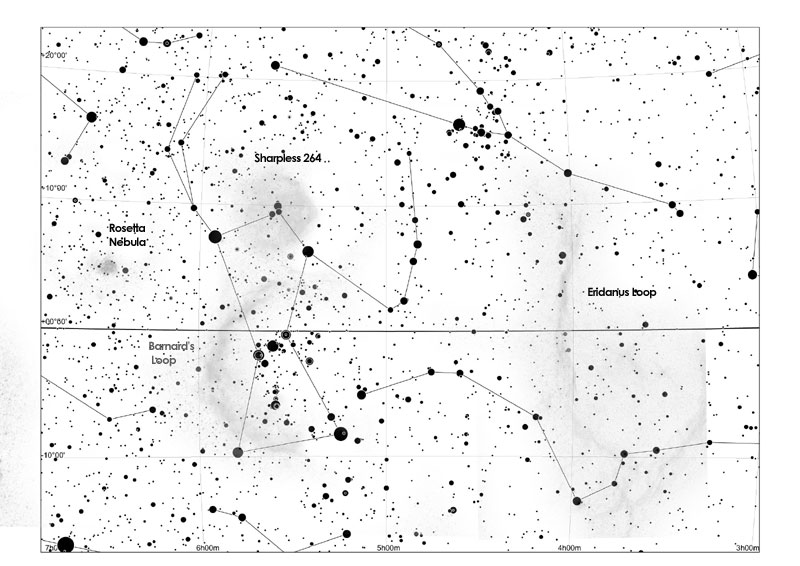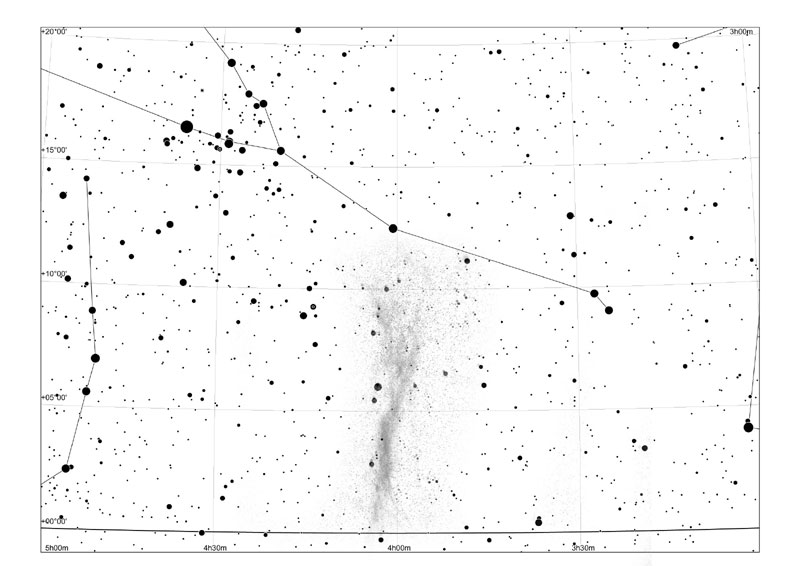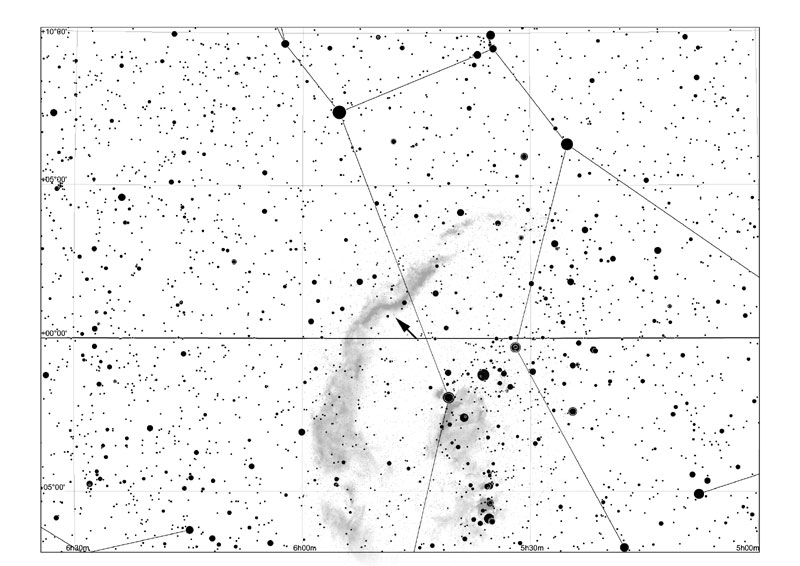My first post here on this exciting new Forum!
The Eridanus Loop is a huge HII bubble east of Orion and possibly an old SNR. It is known also as Sh2-245. It is suspected to be connected to much brighter Barnard's Loop (Sh2-276) in Orion, forming together the Orion-Eridanus Superbubble.
This picture shows nicely, how this is all connected, to the left is Barnard's Loop and to the right the Eridanus Loop. Here is another nice picture by Axel Mellinger. As you will notice, the Eridanus Loop is considerably fainter than Barnard's Loop. And this is the reason I always thought that this a photographic object only. But it isn't
Here is a bigger finder chart.
December 26th of 2012, we had dense fog in the valley and clear sky in the mountains of the Black Forest. The transparency was, however, only moderate, certainly not the best conditions to tackle borderline objects. From Aldebaran it is an easy starhop down to nu Tauri and then you are already there. The brightest part of the Eridanus Loop appears to stretch over 10° (!) in N/S direction, being about 20 to 30' wide. The overall size of the entire Loop is around 20°!
Using my 22" Dob with 7mm exit pupil and H beta filter (Lumicon), I was sweeping over the Loop at different locations along these 10°. And at every one of these locations, the HII emission was visible as a very faint milky band. Two friends of mine, Thomas and Andru, confirmed this observation. The part with the highest contrast appeared to be about 2° South of nu Tauri, directly W of a distinct Y-shaped asterism.
This was much easier than anticipated, in particular under these less than optimal conditions. So we were looking for a challenge.
Thomas had brought along his 100mm binoculars, equipped with H beta filters. With the knowledge of where to find the brightest stretch from the previous observation with the 22", we (or at least I :-) ) were able to locate it also with 100 mm aperture as an extremely faint band. For a comparison, we switched to the brightest part of Barnard's Loop (the S-shaped part NE of M78), which was quite a bit brighter than the observed part of the Eridanus Loop.
While Barnard's Loop is in general not difficult even with my 80mm finder and UHC filter, the Eridanus Loop needs some more aperture and/or better skies. Under regular rural skies (6m5) and H beta filter, 100 mm could be already close to the minimal aperture. Of course, both the Eridanus and Barnard's Loop profit tremendously from perfect sky conditions, but do not strictly depend on it. To me this was the biggest surprise, in particular for the Eridanus Loop.
There is another report of the Eridanus Loop by Dave Riddle using an OIII filter. I haven't thought of using the OIII filter as I suspected the loop to be a classical H beta object.
Finder chart of the Eridanus Loop (bigger chart)
Finder chart for the brightest part of Barnard's Loop (bigger chart)










 Reply With Quote
Reply With Quote
